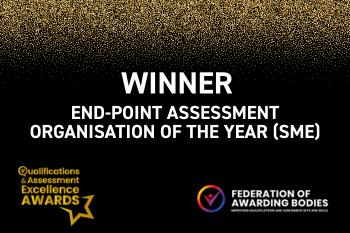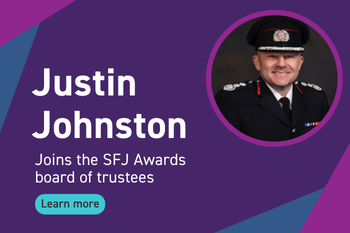Quality assurance, accreditation and certification are all vital parts of the education and professional training sectors. While these three terms are often used in tandem, they all have a standalone function as well. We take a look at each of these processes below and describe what they mean to an awarding organisation.
Jump to:
What is quality assurance?
In education, quality assurance is a “systematic review of educational provision to maintain and improve quality, equity and efficiency”. It refers to the systematic processes and procedures put in place to ensure a learning provision meets best practice consistently. It’s crucial for education providers and regulators to develop a robust quality assurance system to ensure the legitimacy of the qualifications and accreditations learners receive.
External quality assurance uses independent external experts to assess the effectiveness of the way a training or learning and development provision is being run. The process usually involves systematic reviews, audits, and assessments to ensure compliance with predefined criteria, providing objective validation and public assurance of quality.
Each awarding organisation will have a quality assurance process to make sure that educational providers have good ways of working in order to be able to provide their qualifications. However, each place of learning is responsible for their own internal quality assurance processes and systems.
Quality assurance from an awarding organisation perspective is also about standardising assessment decisions: ensuring that decisions made by one centre are consistent with those made by another centre. This certifies the integrity of qualifications.
What is accreditation?
Accreditation, on the other hand, is a formal process where an independent, external body evaluates whether an organisation meets quality standards and criteria. Accreditation ensures that they comply with specific benchmarks, thereby enhancing its credibility and legitimacy publicly.
While both external quality assurance and accreditation both involve evaluations by independent bodies, they both differ in scope and purpose. Where external quality assurance might be used to review an organisation’s processes in periodic evaluations, accreditation is conducted by an accrediting body (or awarding body) to grant the organisation an official accreditation status.
A good example of accreditation is Ofqual (the Office of Qualifications and Examinations Regulation) which regulates qualifications, examinations and assessments in England.
Another example, particularly relevant to SFJ Awards, is what we do when onboarding new centres. We accredit centres which involves rigorous checks and quality assurance to ensure they have the required processes and expertise to deliver to our standards. We also carry out further checks when a centre wants to offer a new qualification. So, while Ofqual accredits awarding organisations like us, award organisations then accredit training centres.
What is certification?
Certification is the process of formally certifying the content of a course or programme. Where quality assurance can impartially assess a course to see if it meets guidelines and learning requirements, certification is designed by subject matter experts and sets the learning requirements themselves. All qualifications certified by awarding organisations go through a development process involving working groups of multiple experts and training designers.
Quality assurance and accreditation are the methods by which learners and awarding organisations can make sure that the content of the learning and assessment – the certification – will be delivered to a high standard.
An example in fire and rescue
A fire and rescue service, who have their own internal training programme, may use external quality assurance to periodically review their teaching methods and course curriculum. It can help them understand how well they are doing as a training provider, and whether there are any changes they could make to adhere to best practice.
The same service then decides that they also want to train their employees with industry-recognised qualifications. To do this, they need to become an accredited training centre with the awarding organisation who regulates the qualifications they wish to offer to learners. The service may wish to undergo an independent quality assurance audit to see if they meet the standards set out by the awarding organisation.
The awarding organisation now reviews the training teams and processes as a whole, to see if it matches their standards. If it does, then they become an accredited training centre and are able to train learners in the qualifications they have gained accreditation for.
They will now be regularly quality assured by external quality assurers to make sure they remain fit to maintain their accredited status.
The awarding organisation has built their qualifications to regulated standards, and once they are approved (by the regulatory body, such as Ofqual) they can offer certification to learners who can display that they have the knowledge, skills and competencies to achieve it.
Quality assurance, accreditation, certification comparison by SFJ Awards




